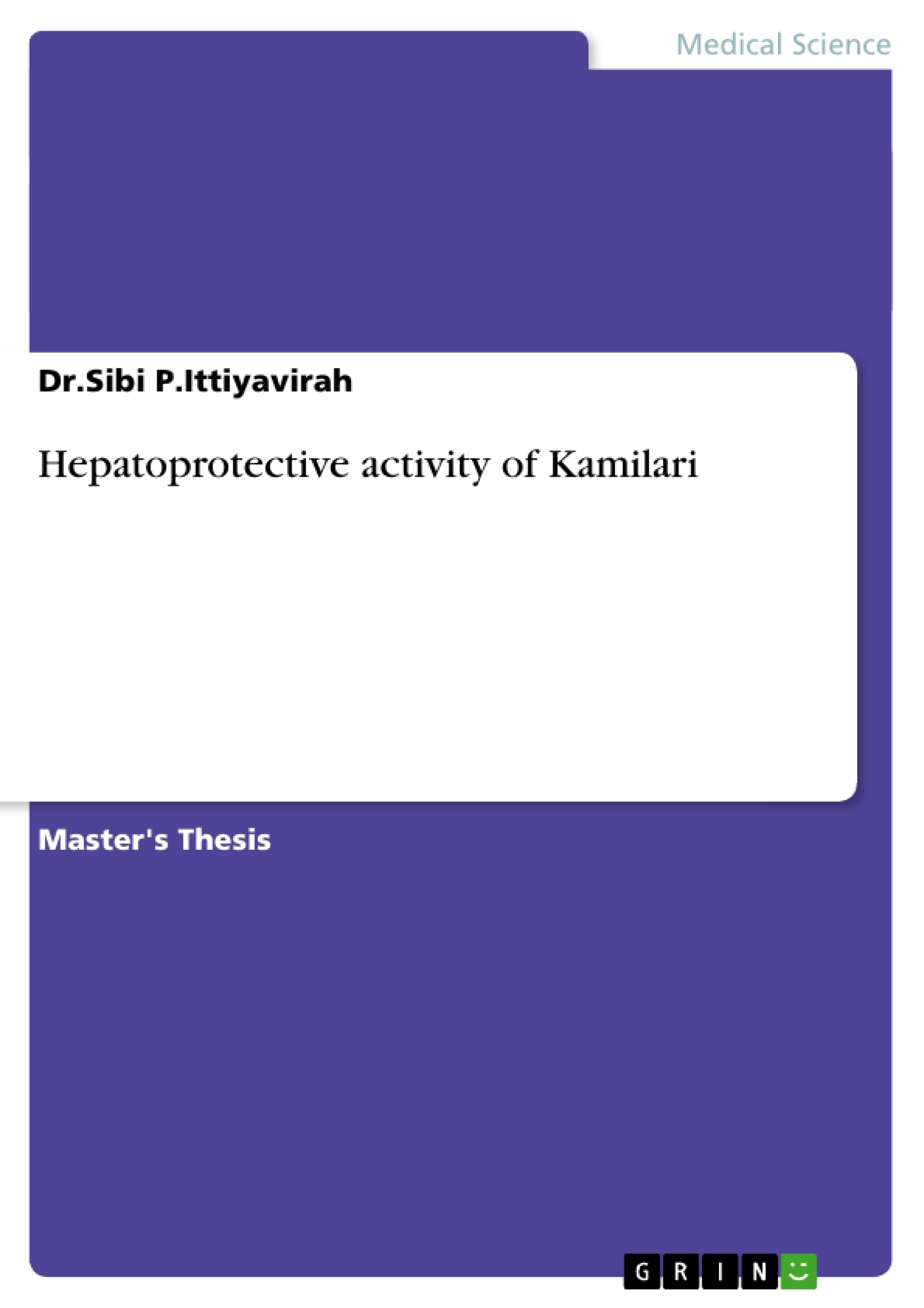Extracto
ABSTRACT
Polyherbal formulations available with a wide range of indications like hepatoprotective , appetite and growth promoters, gastrointestinal and hepatic regulator, as treatment for hepatic dysfunction, for hepatic regeneration as well as liver stimulant and tonic. Despite the widespread use, there is a lack of scientific evidence on their efficacy and safety. This study was designed to evaluate the effect of Polyherbal formulation Kamialri on oxidative stress and associated damages in carbon tetrachloride induced toxicity in Chang liver cells. The study is mainly focused on the evaluation of its antioxidant potential, invitro steatosis and intracellular localisation of reduced glutathione by Monochlorobimane(MCB) staining. Carbon tetrachloride induced toxicity in chang liver cells was well manifested by significant decrease in cell viability, enhanced lipid peroxidation leading to tissue damage,decreased SOD, glutathione, glutathione peroxidase and glutathione S- transferase and increased deposition of fatty acid . MTT study revealed that Kamilari has got cytoprotective activity. It has got the excellent free radical scavenging properties which was proven by various antioxidant activities (LP, SOD, GSH, GPX, and GST). Inhibitory effect of Kamilari on fatty acid deposition was proven by invitro steatosis studies which were conducted on palmitic acid treated chang cell line.Based on the above studies it is concluded that Kamilari has cytoprotective and antioxidant activity, and found to be effective in steatosis .
1. Introduction
Liver is an important organ that plays an essential role in regulating various physiological processes in the body. It is involved in several vital functions, such as metabolism, secretion and storage. In vitro liver systems represent a better experimental approach to screen potential hepatotoxic compounds. Liver cell lines are characterized by unlimited sub cultivation and cell availability in large number1. The hepatotoxin used was carbon tetrachloride because it has long been known as a model toxicant and has been the focus of many in vitro and in vivo toxicological studies2 . The liver is the major target organ of carbon tetra chloride toxicity owing to its high content of Cytochrome P-4503.
Kamilari is a commercial ayurvedic formulation suggested to be effective in treatment of liver disorder such as jaundice, chronic alcoholism, acute and chronic inflammatory disorders. As per the manufactures information Kamilari consist of Thespesia populinea, Eletteria cardamom, Zingiber officinalis, Glyccyrhiza glabra, Piper longum, Aegle marmelos, Trichosanthes cucumerina, Holostemma adakodein Schulter and Honey.Since large mass of populations used preferable herbal preparation, therefore there is need to be evaluate the proper mechanism underlying the hepatoprotective effect.
Kamilari, a polyherbal formulation of traditional medicinal plants and its in vivo protective effect being reported4 but no valid data is available regarding proper cellular mechanism on carbon tetrachloride toxicity . This study was designed to evaluate the effect of Kamialri on oxidative stress and associated damages in Ccl4 induced toxicity in Chang liver cells. The study is mainly focused on the evaluation of its antioxidant potential, invitro steatosis and intracellular localisation of reduced glutathione by Monochlorobimane(MCB) staining.
2. MATERIALS & METHODS
2.1 Invitro protective effect of Kamilari in Ccl4 treated Chang liver cells
Chemicals and media.
Carbon tetrachloride(0.1%) (Appendix 1), Trypsin (Appendix 1), Foetal bovine serum albumin (Appendix 1), Palmiticacid(20Mm) (Appendix 1), Oil red O (Appendix 1), MTT (3-(4, 5-dimethylthiazolyl)-2, 5-diphenyl-tetrazolium bromide) (Appendix 1),Dimethyl sulfoxide (Appendix1) .
MTT assay5.
500µl Dimethyl Sulphoxide (DMSO) , Chang liver cell line, Micropipette, Medium –DMEM with 10% FBS pH 7.4, 500µl MTT in PBS, CO2 incubator, UV-Visible spectrophotometer
2.2 Lipid peroxidation6
70% alcohol,1%TBA,400µl acetone,Cell lysate
2.3 Estimation of SOD activity7
50mM phosphate buffer (7.8), 45µM methionine, 5.3mM riboflavin, 84µM NBT, 20 µM potassium cyanide, cell lysate(50µl).
[...]
- Citar trabajo
- Dr.Sibi P.Ittiyavirah (Autor), 2012, Hepatoprotective activity of Kamilari, Múnich, GRIN Verlag, https://www.grin.com/document/268298
Así es como funciona






















Comentarios